Mozambique Travel Destinations and Vacations
Help Me Plan- Home
- >
- African Travel
- >
- Mozambique
Mozambique Destination Guide
We’ve summarized the most essential travel information you’ll need when planning a visit to Mozambique — a tropical coastline of islands, reefs, and culture.
Getting to Mozambique
Vilanculos (VNX) serves the Bazaruto Archipelago and has regular regional flights (including Johannesburg). Traditional dhows and motorboats connect to the islands. Pemba (POL) is the closest major airport for the Quirimbas Archipelago, with onward boat/helicopter transfers to island lodges.
Weather & Best Time to Visit
- Dec–Mar (Wet season): Hot, humid, often rainy; cyclone risk highest Jan–Mar in the far north.
- Apr–May: Rain eases; humidity drops and conditions improve.
- Jun–Oct (Dry season): Prime time — clear skies, warm days, low humidity, minimal rain. Humpback whales migrate along the coast roughly Jun–Nov.
- Nov: Transitional; typically hot and humid before summer rains.
Visa Information
Mozambique operates an eVisa / Electronic Travel Authorization (ETA) system and a visa-waiver for selected nationalities. Many others can obtain a visa on arrival (usually up to 30 days). Rules change periodically — always verify current requirements and any ETA registration on the official portal before you travel. Official Mozambique Visa Information and Application Process.
Medical Considerations
Malaria occurs throughout Mozambique: consult your physician about prophylaxis and use repellents. Drink bottled or properly filtered water in rural areas and on remote islands. Ensure routine vaccinations (MMR, DTP, varicella, polio) are up to date; Hepatitis A and typhoid are commonly recommended for travelers.
Safety
Island lodges are generally secure, but normal precautions apply: keep valuables discreet, use in-room safes where provided, and follow lodge guidance for water activities and boat transfers.
Traveling Around
Reaching islands typically involves boat, light aircraft, or helicopter transfers. Costs rise with remoteness, but the pristine reefs and beaches are the reward. Expect soft-luggage limits (often ~20 kg) on charter flights and certain boats/helicopters.
Top Travel Destinations in Mozambique
Mozambique is Southern Africa’s tropical paradise, with pristine shores and remote islands for the ultimate beach vacation.
Tropical islands washed by the warm Indian Ocean — superb snorkeling, classic sandbanks, and famous reefs.
Thirty-plus islands with remote lodges, rich marine life, and renowned sites like St Lazarus Bank.
Mozambique Vacation Options & Travel Tips
Seaside retreats, vibrant reefs, and Indian Ocean adventures define a Mozambique escape.

Tours, Safaris & Honeymoons
Browse our thoughtfully crafted trips.

Tailor-Made Vacation Packages
Customize any itinerary to your pace.

Travel Tips & Advice
Handy info for a smooth trip.
Other Recommended Travel Destinations in Mozambique
Beyond the headline islands, Mozambique offers coastal towns and conservation areas worth adding to an itinerary.

Vilanculos
Gateway to Bazaruto with beaches, boat charters, and a lively small-town vibe.

Inhambane
Near Tofo and Barra — famous for manta rays and seasonal whale shark encounters.

Gorongosa National Park
A restoration success story with growing wildlife populations, guided drives, and community-focused conservation.
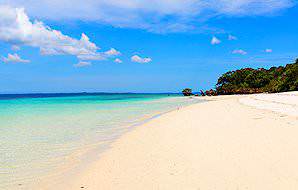
Pemba
Peninsula city on Pemba Bay and the main gateway to the Quirimbas islands.

Niassa Special Reserve
One of Africa’s largest wild reserves (~42,000 km²). Elephant numbers fell sharply in the 2010s but anti-poaching has improved trends; it remains a stronghold for African wild dogs.

Maputo
Capital city and southern gateway; architecture, markets, and seafood. Formerly Lourenço Marques.
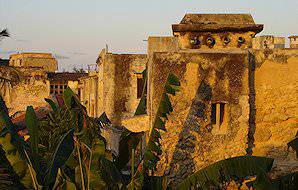
Ilha de Moçambique
UNESCO-listed island with Portuguese and Swahili heritage, forts, and museums; colonial capital until 1898.

Ponta do Ouro
Southern beach town near the South Africa border; known for dolphins, seasonal humpback whales, and diving.
Mozambique Travel Video & Facts
Expect sun-soaked days, clear seas, and vibrant marine life.
Mozambique lies on the southeastern coast of Africa. Tourism concentrates around offshore islands and the warm, clear waters surrounding them.
Activities in a Tropical Paradise
Mozambique’s coast is a playground of turquoise seas, coral reefs, and island adventures. Whether you seek serene relaxation or adrenaline-fueled exploration, there’s an experience to match every traveler’s style. From sunrise dhow sails to sunset beach strolls, these activities capture the essence of a tropical escape.
- Snorkeling among vibrant coral reefs and tropical fish
- Scuba diving with manta rays, turtles, and seasonal whale sharks
- Island-hopping by traditional dhow or motorboat
- Kayaking or stand-up paddleboarding on calm lagoons
- Big-game fishing for marlin, tuna, and kingfish
- Swimming with wild dolphins
- Horseback riding along pristine beaches
- Relaxing sunset cruises with cocktails and canapés

Foods to Try in Mozambique
An Indian Ocean pantry: seafood, coconut, and Portuguese-influenced flavors.

Prawns
Mozambican prawns are legendary — grilled in garlic-lemon butter or spicy piri-piri and served in generous portions.
Coconut Rice
Coconut palms line the coast; coconut milk enriches staples like coconut rice — perfect with seafood.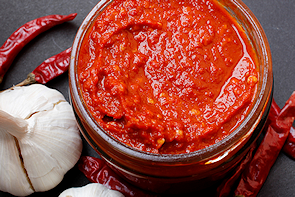
Piri-Piri
The famed Portuguese-influenced chili sauce made with African bird’s eye chilies adds a piquant kick to chicken and seafood.
Tipo Tinto
A much-loved local rum distilled from sugarcane — often mixed with raspberry soda, though preferences vary.Mozambique Travel FAQ
Most packages include non-motorized water sports (snorkeling, kayaking, stand-up paddleboarding). Some lodges add a motorized activity per stay (e.g., a boat excursion or dive). Check your specific inclusions/exclusions for gear, park fees, and any age or certification requirements.
Connectivity is good in towns and cities like Maputo, Vilanculos, and Pemba, but limited or unavailable at many island lodges. Expect Wi-Fi only in main areas and plan to download offline maps and documents in advance.
Yes. Reputable lodges provide safe bottled or filtered water, often via refill stations. Tap water quality varies elsewhere; when in doubt, stick to bottled or filtered water and avoid ice of unknown origin.
Island logistics (helicopters, boats, light aircraft) increase costs, especially in peak season (Jun–Oct). You can often save by traveling in shoulder months and bundling stays at the same lodge group for transfer discounts.
Transfers are typically by boat, light aircraft, or helicopter, arranged by your lodge and subject to tides and weather. Soft-luggage limits (about 15–20 kg per person) commonly apply on charter flights.
Allow at least 4–5 nights for an island stay to account for transfers. A classic beach break is 7–10 nights; plan 10–14 days if combining regions or adding a safari. Consider a buffer night near your international flight.
The Bazaruto and Quirimbas Archipelagos are the standouts, with healthy reefs and seasonal pelagics. Whale sharks are more likely Dec–Apr in several areas; humpback whales migrate offshore roughly Jun–Nov.
Yes. Many lodges offer PADI Discover Scuba experiences and Open Water referral courses. You’ll complete a medical questionnaire; some conditions require a doctor’s clearance. Minimum age and depth limits apply for juniors.
Yes — options include Gorongosa National Park, Maputo National Park, and Niassa Special Reserve. Wildlife densities vary, so many travelers pair Mozambique’s beaches with a Big Five safari in a nearby country.
Mozambique declared itself free of all known land mines in 2015. As with any wilderness travel, stay on marked paths and follow local guidance.
Popular Activities

Visit Turtle Nesting Sites
Five species occur along Mozambique’s coast. In the south (e.g., Ponta do Ouro to Inhaca), loggerhead and leatherback nesting peaks roughly Oct–Jan, with hatching Dec–Apr. Some northern islands host green and hawksbill nesting. Excursions often run at night with strict guidelines to minimize disturbance.

Snorkeling & Diving
A diver’s dream: soft corals, reef fish, rays, turtles, and seasonal megafauna. Expect manta rays, reef sharks, morays, and (in season) humpbacks offshore; whale sharks are more likely Dec–Apr in several areas.

Boat Trips
Sail in a colorful dhow, kayak over shallows, or take a sunset cruise — plenty beyond beach-lounging.
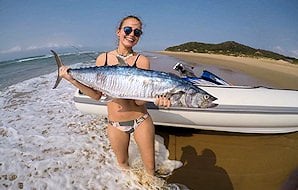
Big-Game Fishing
Chartered deep-sea trips target species like kingfish, tuna, marlin, wahoo, and barracuda.
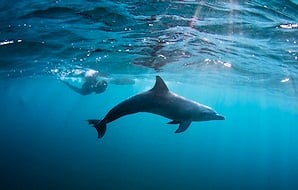
Swim with Dolphins
Some resorts offer guided in-water encounters with wild dolphins under strict codes of conduct.
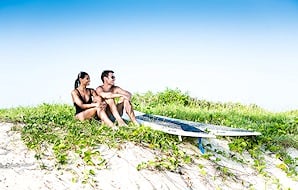
Leisure & Culture
Island picnics, cooking lessons, beach horse-riding (Vilanculos/Benguerra), spa time, and guided village visits — options vary by lodge.

Sailing on a Dhow
Experience traditional lateen-rigged sailing on the Indian Ocean — from sunset cruises to island-hopping.
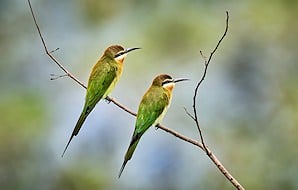
Bird Watching
Quirimbas islands and Gorongosa offer excellent birding — from waders and terns to forest specialties inland.
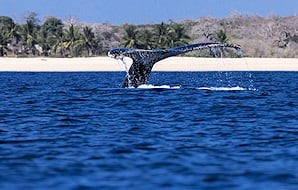
Whale & Dolphin Spotting
Humpbacks migrate off the coast ~Jun–Nov. Southern right whales are occasional visitors. Bottlenose and humpback dolphins are seen year-round.
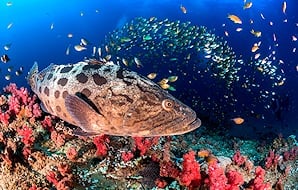
Marine Life
Reefs host turtles, reef fish, rays, and seasonal whale sharks. Bazaruto protects the region’s last viable dugong population.
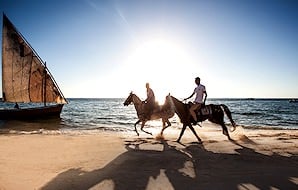
Horse Riding
Ride along beaches in Vilanculos and on Benguerra Island — options for beginners to experienced riders.
Recommended Attractions
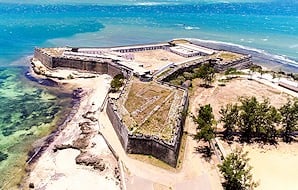
Fort São Sebastião
Ilha de Moçambique’s massive 16th–17th-century fort — the best preserved of its kind in sub-Saharan Africa.

Machilla Magic
Community arts and crafts in Vilanculos showcasing local artisans — great for unique handwork.

Two Mile Reef
Between Benguerra and Bazaruto in the Bazaruto Marine National Park. Often best Apr–Sep; avoid peak cyclone months (Jan–Mar) when seas can be rough.
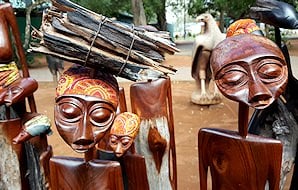
Maputo Central Market
Busy market for produce, seafood, and crafts — barter politely and compare prices.

Casa do Ferro
An all-steel house built in 1892, often erroneously attributed to Gustave Eiffel, but designed by Belgian engineer Joseph Danly. It is striking but proved impractical in the tropical heat.
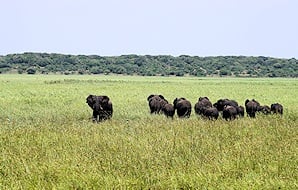
Maputo National Park
Coastal reserve south of the capital (4x4 recommended) protecting wetlands, beaches, and elephants — great for day trips or overnights.
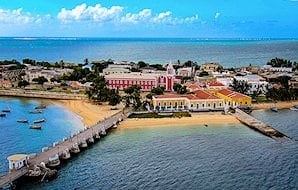
Palace and Chapel of São Paulo
On Ilha de Moçambique — a former Jesuit college turned governor’s residence (to 1898, when the capital moved to Lourenço Marques).
Diving Sites
Top regions are the Quirimbas Archipelago (access via Pemba) and the Bazaruto Archipelago (access via Vilanculos) — both protected areas with excellent visibility in season.
Quirimbas highlights include reefs around island lodges (e.g., Medjumbe, Quilalea) and St Lazarus Bank. Expect game fish, barracuda schools, turtles, and (seasonal) humpbacks off the drop-offs.
Bazaruto Marine National Park offers coral ridges, walls, and seagrass meadows supporting dugongs. Signature sites include Two Mile Reef and Manta Ray Reef.
The People
Most Mozambicans are of African origin; minorities include people of Portuguese, Indian, and mixed ancestry. Cultural-linguistic ties span borders — especially with Swahili-coast communities to the north and with neighboring southern African states.
Many ethnic groups are present. North of the Zambezi, communities like the Makonde, Macua, and Lomwe are prominent; south of the Zambezi, groups such as the Tsonga/Thonga are numerous. Portuguese is the official language, with dozens of local languages widely spoken.
Geography
Low-lying coastal plains dominate the east, widening southward and rising inland to plateaus between roughly 500–1,000 m. The northwest is mountainous, and isolated granite inselbergs punctuate the interior.
Highest point: Mount Binga (2,436 m) on the Zimbabwe border. Other notable peaks include the Gorongosa massif (1,862 m), Mount Namuli (2,419 m), and Mount Chiperone (2,054 m).











